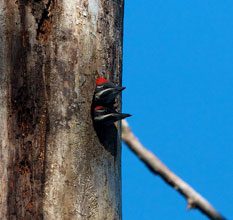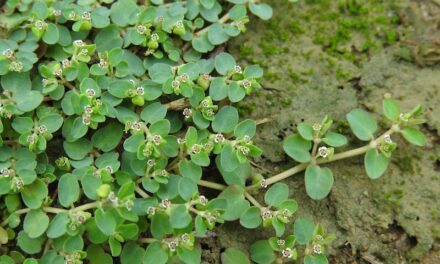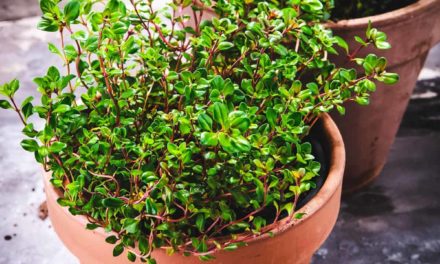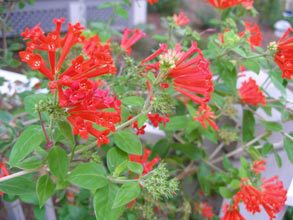 In the windbreak of pine trees planted 30 years ago to slow winter’s westerly winds upon the camellia garden and that side of the house, one of the trees, now some 60 feet high, had succumbed to age or disease.
In the windbreak of pine trees planted 30 years ago to slow winter’s westerly winds upon the camellia garden and that side of the house, one of the trees, now some 60 feet high, had succumbed to age or disease.
The snag—bare of bark from the voracious work of resident pileated woodpeckers, flickers, and red-cockaded woodpeckers, porous with holes for nests of birds and mammals—the snag had fallen silently in the night and lay segmented, stretched across a swathe of lawn and up a low rise marking the camellia garden’s edge.
The topmost ten feet, still some eight inches thick, had fallen squarely across one of my father’s unnamed seedling camellias, a “rescue” from one of the old family cemeteries which dot every farmstead in this area of South Carolina. Unlike most such foundlings, this plant had exquisite form, growing quite low and wide, beautifully rounded. Its bloom, instead of the usual single row of petals, was richly double and in a fine, pleasing rose color.
It now stood shorn of its lovely symmetry, smashed to a jumble of broken branches beneath the fallen pine log. I was crestfallen.
Shortly before that, winter had finally relented, it seemed, and the pear trees were starting their bloom, many bulbs were emerging, and the tender plants that I keep under cover for the winter had been put out to soak up warm air and sunshine. I returned from an overnight stay away for a garden conference to find a rogue cold snap had inflicted substantial damage to almost anything with new growth, and particularly to the tender plants just now exposed. Most would recover, but one beloved plant—a large and handsome Nun’s Orchid, Phaius tankervilliae—was completely blackened to the crown.
This orchid had already, a year before, been killed to the ground by a freeze. I considered it a miracle that some new shoots had emerged last summer from the roots to grow into a substantial, if vulnerable, plant. It had special meaning, since it had been an extravagant gift from my dear friend Anne. Now it was gone. There’s only so much an orchid can take. Me, too.
Having recognized ages ago the limitations even our expansive enclosed porches can provide for winter plant protection (some people collect LP record albums; I seem to accumulate plants too delicate for exposure to the real world), I had designed and constructed from many different materials a quite large (to me) greenhouse.
I was pleased with its somewhat reasonable cost, its location next to my 14 X 30 potting shed, and its utility. It was sited so that the deciduous trees nearby would allow glorious sunlight all winter, but the summer’s leafy shade would protect many plants from overheating and sunburn. Perfect.
We had weeks of incessant early spring rains this year. In one of those weeks of rain, one of the protecting deciduous trees, an old wild cherry, a species notorious for rotting from within, fell atop the greenhouse, collapsing the entire structure. In this case, no plants suffered damage, but the greenhouse now is a twisted shambles. Coming upon the sight the next morning, I was heartsick.
The old farmhouse has a long curved driveway to bring visitors from the public road to the house. This driveway replaces the original entrance drive which brought travelers a mile down the road straight to the columned front porch. Once the public road was extended, however, it was made to veer around the property, and a different access point was required.
The entrance now is through a small grove of century-old white oaks. The exit, about a quarter mile farther down the road, is flanked by aMagnolia grandifloraat the roadside. A tunnel of overhanging live oaks, still relatively young, takes the departing visitor to the exit. A small colony of native azalea,Rhododendron catawbiense, beneath a towering old pine, a large native holly,Ilex opaca, and several smaller trees denote this exit.
A long hard search led me to a source for a small (not so small as to be affordable, but I was on a mission) white-blooming clone of the native redbud,Cercis canadensis. I carefully planted the foot-tall specimen where its impact, once it grew, could be appreciated by the passing driver as well as our departing visitors and by viewers from our back porches. Only weeks after it had sprouted its first spring leaves, I found it had been nibbled to oblivion by foraging deer. My head ached.
I had meant well when I planted a small Cherokee Rose (Rosa laevigata) beneath the tall old windmill which once supplied the power to draw water from a deep well. It is a tall, steel-framed structure topped by the still-turning, creaking fan, and it seemed ideal to support the beautiful white-blooming climbing rose.
It took only a few years’ growth for me to realize my error: Cherokee rose will completely cover anything, no matter how high, with viciously-thorned canes, some an inch thick and 30 feet long. It had become a trap designed to ensnare anyone passing by, and any attempt to trim its exuberant growth will be a blood bath. Each spring’s bloom evokes my dread of the severe trimming I must do.
Every calamity possible sometimes descends at once upon a poor soul, heaping disaster and despair on top of worry and woe. Railing against the whims of the gods, however, remains as futile in this world as it has for millennia. Myth and experience teach us that hubristic defiance of the cosmos inevitably leads to disaster.
Farmers and gardeners already know this, and perhaps it is universal knowledge gained by anyone who, by dint of labor and humility, must face the discovery that his meager efforts—seeming mighty and grand—are as insubstantial as an eider’s fluff blown from the nest.
For this gardener, at least, the list of mounting horrors I’ve had to face begin to embarrass me, once I compare my own woeful complaints to the cries of those who truly suffer or to the disaster my species seems about to complete upon the Earth. It is petty arrogance, not great hubris, to pretend I have any particular understanding of nurturing a garden in my care through Nature’s turns. I long ago conceded—had no choice but to concede—Nature’s supremacy in that little matter.
Theyare embarrassing, now that I begin to list all these events in my mind and on paper. They wreak havoc with my need for some kind of order, however ephemeral, in the garden, in the world. And order, it seems, is fleeting.
Failure, loss, stupidity, anguish—it all accumulates in the soul. The earnest farmer, the conscientious gardener, sooner or later begins to feel the weight of the world bearing down on him. Spring is hard to conjure.
The first image is by Pwieland (https://creativecommons.org/licenses/by-sa/3.0/) from Wikimedia Commons. The second image is by the author and used here by permission








